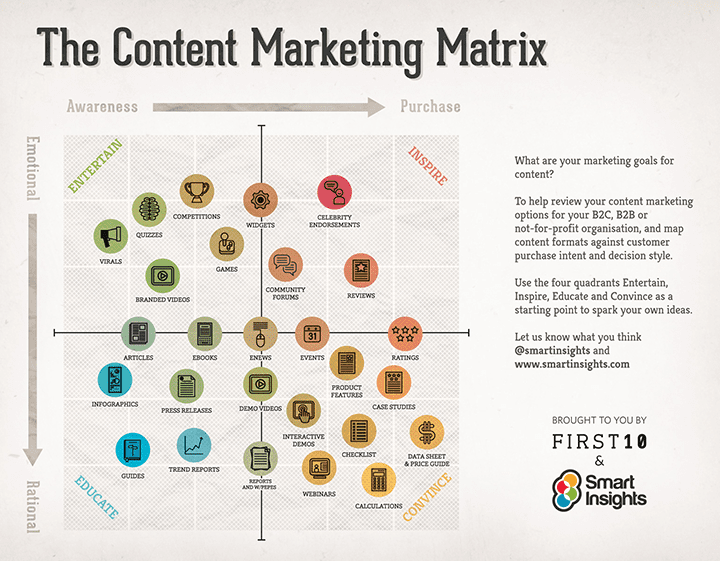What kinds of post are best for building a site's traffic and reputation?
No matter what kind of site you’re running or what your online goals are, you need a strong stream of content to keep your momentum moving forward. Most website builders already encourage you to start and maintain an active blog, but you need to take it upon yourself to follow through; publishing more content (and better content) will attract more people to your site (through multiple channels, including search engines, social media, and direct visitors) and will encourage more conversions and customer retention as well. But what kinds of posts are best for building a site’s visibility and reputation?
What Makes a Blog Post “Good”?
Let’s first examine some criteria we can use to classify a blog post as “good” or “effective:”
- First, your post needs to grab attention. If your headlines don’t stand out, or if your topics aren’t interesting, they aren’t going to be effective.
- Next, your content should be optimized for search engines, meaning your topics include target keywords your demographics might search for and your content is generally in demand.
- Your content should also be valuable, or practical in some way. Anyone who reads your material should walk away with some new ability or some new knowledge that will help them in the future.
- Your posts should show off the knowledge and authority you have in your respective industry to attract more people and make your brand seem more trustworthy.
- Finally, all your content needs to be original to distinguish it from the competition and stand out amidst the white noise.
You should also plan to utilise other forms of content in your marketing plan, and map them on our content marketing matrix to consider what mix of methods will be most effective.

Types of Blog Posts to Consider
With those qualities in mind, these archetypes of content are some of the most valuable for building out your blog:
- How-to guides. How-to guides are incredibly valuable because they’re practical (they show users how to accomplish something) and they’re usually searched for frequently. Any title that starts with “how to” is almost immediately optimized for searches, since this is how most users search for solutions to their problems, and when they find your solution, they’ll instantly see you as an authority. There’s almost no disadvantage here, as long as you’re choosing original topics.
- You might roll your eyes at listicles you see in your social media newsfeed, but there’s a reason this format is so popular. It takes a complex topic and boils it down to digestible bullet points, making for fast, at-a-glance reading. They’re catchy, and to most audiences valuable, though these aren’t quite as authoritative as some of the other items on this list.
- “Why” and “how” articles. The close cousin of “how-to” articles, “why” and “how” articles are more in-depth and explain the mechanics of some phenomenon, whether that’s why milk curdles or how Coca-Cola became a dominant cola brand. These titles tend to pique user curiosity and naturally fall in line with user searches.
- Consumers are always hungry for news, no matter what industry you’re in. Post about the latest technology, the latest trends, or new developments in companies related to yours. These types of posts are frequently sought-after, and if they’re significant enough, they’ll easily stand out in a crowd of more traditional “evergreen” content.
- Cheat sheets. Cheat sheets are super catchy because they promise users a fast way to improve at something (or do something more efficiently). They also reduce lots of complex information to a more concise, simpler format, making them appealing to people who aren’t experts in your niche. This also makes you seem more authoritative.
- Interviews are a popular content medium, in part because of how easy they are to execute. If you record the video and audio, all you have to do is find a willing authoritative participant and ask him/her questions significant to your audience. You’ll borrow the authority of whoever you choose, and you’ll instantly attract people—plus, you’ll be able to cross-promote the interview with your interviewee, greatly increasing your visibility.
- Case studies. Finally, consider including some case studies. These could be examinations of clients you’ve had in the past or of major companies or individuals doing something noteworthy in your industry. Case studies tend to be in-depth and authoritative, and catch the attention of people looking for valuable, specific information.
If you have a website with a blog, don’t consider it complete until you have a regular working rotation of these seven post types. Remember, originality is still crucial here, so develop these frameworks with new ideas, new angles, and new information if you want to keep your audience engaged. Over time, you’ll see some of these classes outperforming others, so adjust your posting schedule accordingly and keep giving your audience more of what they want.

Thanks to Larry Alton for sharing his advice and opinions in this post. Larry is an independent business consultant specializing in social media trends, business, and entrepreneurship. Follow him on
Twitter and
LinkedIn.




 Thanks to Larry Alton for sharing his advice and opinions in this post. Larry is an independent business consultant specializing in social media trends, business, and entrepreneurship. Follow him on
Thanks to Larry Alton for sharing his advice and opinions in this post. Larry is an independent business consultant specializing in social media trends, business, and entrepreneurship. Follow him on 


